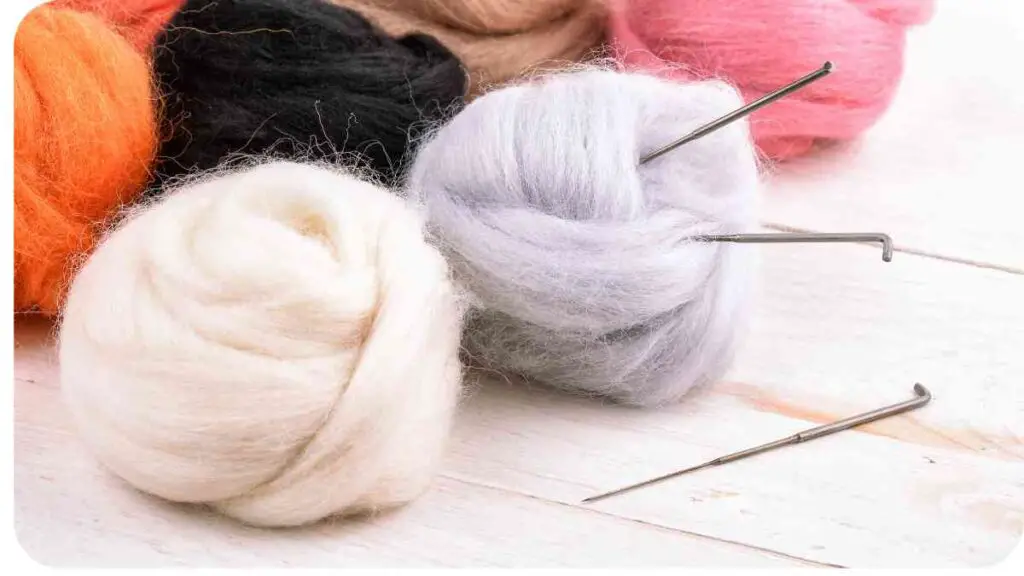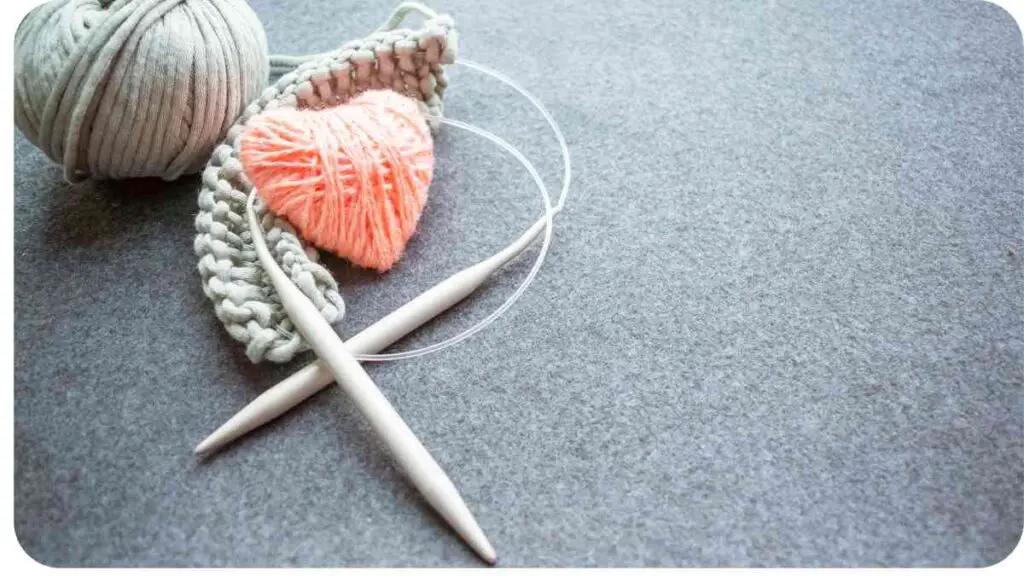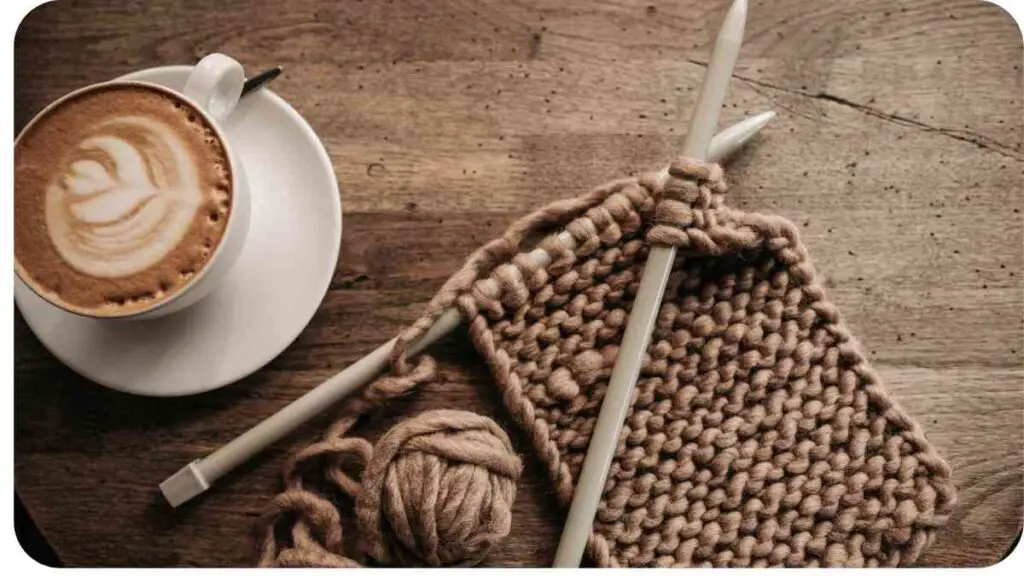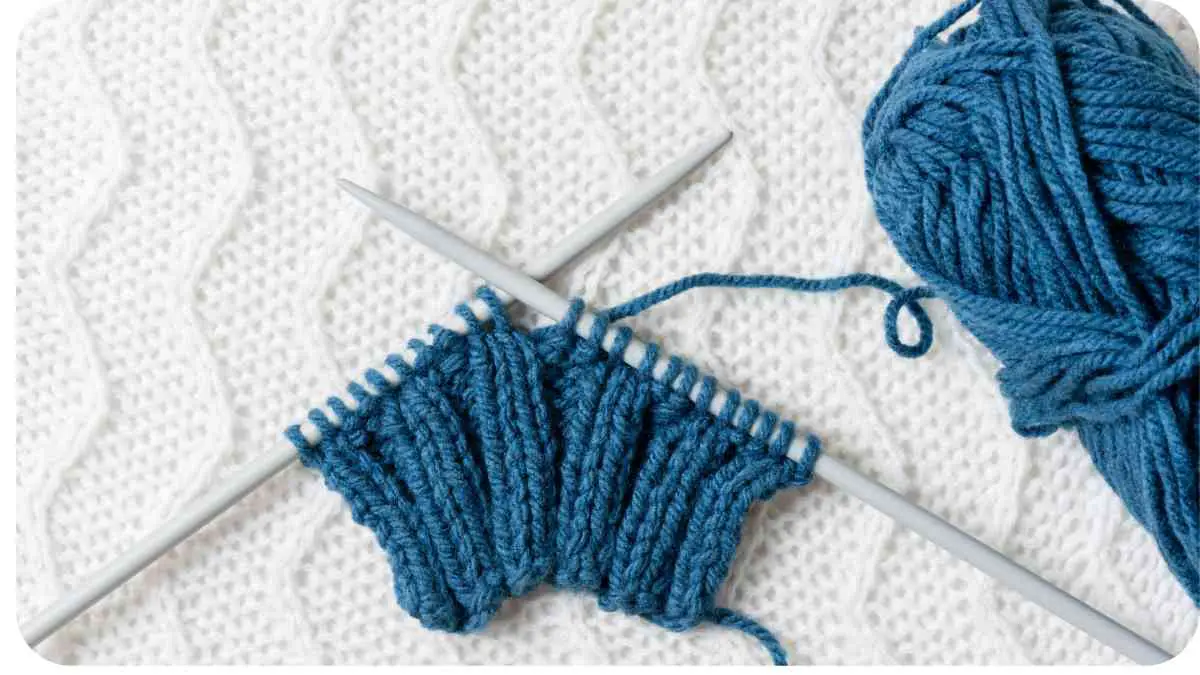Knitting is an intricate and beautiful craft that has been passed down through generations. To excel in knitting, understanding the different knitting needle sizes is essential. Choosing the right needle size can significantly impact the final outcome of your knitting project, ensuring the perfect fit and drape.
In this comprehensive guide, we will explore various aspects of knitting needle sizes, including different types of needles, how to choose the right size, common needle size conventions, adjusting needle sizes, recommended sizes by yarn weight, and additional tips to enhance your knitting experience.
| Takeaways |
| Choosing the right needle size is crucial for achieving the desired gauge and fabric quality in your knitting projects. |
| Factors such as yarn weight, project complexity, and personal knitting style should be considered when selecting needle sizes. |
| Experimenting with different needle sizes can help adjust your tension and achieve the correct stitch gauge. |
| Understanding common needle size conventions, such as U.S., metric, UK, and Japanese systems, will help you interpret patterns and labels accurately. |
| Gauge swatches are essential for ensuring the needle size is appropriate for your specific knitting style and project requirements. |
Understanding Knitting Needle Sizes
2.1 Different Types of Knitting Needles
Before delving into the intricacies of needle sizes, let’s familiarize ourselves with the different knitting needle types available. There are three main types:
- Straight Knitting Needles: These are the traditional, straight and long needles with pointed ends. They are ideal for flat knitting projects, such as scarves, afghans, and dishcloths.
- Circular Knitting Needles: These needles have two pointed ends joined by a flexible cable. They are great for knitting in the round, for projects like hats, sweaters, and socks. Circular needles can also be used for flat knitting.
- Double-Pointed Knitting Needles: Also known as DPNs, these needles have pointed ends on both sides. They are typically used for knitting small projects in the round, such as gloves, socks, and sleeves. DPNs are often used in sets of four or five.
To understand knitting needle sizes, it’s crucial to recognize the variations within these types and the corresponding numerical sizing conventions.
“Understanding the right yarn weight is crucial in knitting. It affects needle choice and stitch definition, making it an essential consideration in your knitting projects.”
2.2 Needle Size Chart

To make it easier for knitters to determine the right needle size for their projects, a standardized needle size chart has been established. This chart assigns numerical values to different needle sizes, allowing for consistency and ease of reference. Let’s take a look at a sample needle size chart:
Table 1: Sample Needle Size Chart
| U.S. Size | Metric Size (mm) | UK Size | Japanese Size |
| 0 | 2.0 | 14 | 2 |
| 1 | 2.25 | 13 | 2.5 |
| 2 | 2.75 | 12 | 3 |
| 3 | 3.25 | 11 | 3.5 |
| … | … | … | … |
This table provides a reference for converting needle sizes between different conventions. The U.S. sizes are commonly used in North America, while the metric sizes are a global standard. The UK sizes are prevalent in the United Kingdom, and the Japanese sizes are specific to Japan.
2.3 Interchangeable Knitting Needles
One innovative solution to address the need for multiple needle sizes is the use of interchangeable knitting needles. These sets consist of different needle tips and cables that can be easily and securely attached. With interchangeable knitting needles, you can switch between needle sizes without investing in separate sets. This versatility enhances your knitting experience and minimizes the need for excessive needle storage.
“When it comes to knitting, choosing the right yarn is half the battle. This guide explains how the yarn you select impacts your knitting project’s success.”
2.4 Circular Knitting Needles
Circular knitting needles deserve a closer look due to their versatility and functionality. These needles have a flexible cable that joins the two pointed needle tips. Depending on the project requirements, you can choose different cable lengths. Circular needles are available in various materials and lengths to accommodate different knitting needs. They offer several advantages over straight needles, such as the ability to hold a large number of stitches, making them ideal for larger projects like shawls or blankets.
Table 2: Recommended Circular Needle Sizes
| Project | Recommended Circular Needle Size |
| Hat | US 6 (4.0mm) |
| Sweater | US 8 (5.0mm) |
| Socks | US 1 (2.25mm) |
| Shawl | US 4 (3.5mm) |
When using circular knitting needles, it’s important to pay attention to the needle length. The length should be longer than the circumference of your project to comfortably accommodate all the stitches. For smaller projects like hats or sleeves, a 16-inch circular needle is suitable, while a 32-inch or longer circular needle is recommended for larger projects like blankets or shawls.
2.5 Double-Pointed Knitting Needles

Double-pointed needles (DPNs) are often used for knitting in the round with small circumference projects such as socks or gloves. They come in sets of four or five, and each needle has a pointed tip on both ends. By using multiple DPNs, you can distribute your stitches among them and work on different sections of your project simultaneously.
Table 3: Recommended DPN Sizes
| Project | Recommended Double-Pointed Needle Size |
| Socks | US 1 (2.25mm) |
| Gloves | US 2 (2.75mm) |
| Sleeves | US 4 (3.5mm) |
DPNs are excellent for intricate patterns or projects that require frequent shaping. They provide better control over your stitches and help avoid laddering—the loose appearance of stitches that commonly occurs between needle transitions.
Choosing the Right Knitting Needle Size
Choosing the correct knitting needle size plays a crucial role in achieving the desired outcome of your project. Here are some factors to consider when selecting the appropriate needle size:
“Just as knitting needle sizes matter, understanding crochet hook sizes is vital for crochet enthusiasts. Learn about hook sizing and how it influences your crochet projects.”
3.1 Yarn Weight and Needle Size
The weight of the yarn you choose will influence the needle size. Different yarn weights have recommended needle size ranges. For example, lace weight yarn typically requires smaller needles, while bulky yarn requires larger needles. It is important to consult the yarn label or pattern instructions to determine the recommended needle size for the specific yarn weight.
Table 4: Recommended Needle Sizes by Yarn Weight
| Yarn Weight | Recommended Needle Size Range |
| Lace | US 000-3 (1.5-3.25mm) |
| Fingering/Sock | US 1-3 (2.25-3.25mm) |
| Sport/DK | US 3-6 (3.25-4.0mm) |
| Worsted/Aran | US 7-9 (4.5-5.5mm) |
| Bulky/Chunky | US 10-11 (6.0-8.0mm) |
| Super Bulky/Jumbo | US 13 and above (9.0mm and up) |
3.2 Project Requirements
The requirements of your knitting project, such as the desired stitch definition, drape, and size, should also influence your needle size choice. If you want a tighter and denser fabric, you may opt for a smaller needle size. On the other hand, larger needle sizes create a looser and more open fabric. Consider the end use of your project and the effect you want to achieve before selecting the appropriate needle size.
3.3 Gauge Swatching
One of the most important steps in choosing the correct needle size is to create a gauge swatch. A gauge swatch is a small sample of knitting worked with the chosen yarn and needle size. By knitting a swatch and measuring it, you can determine your stitches and rows per inch. This information helps ensure that your finished project matches the intended size and dimensions.
To create a gauge swatch, cast on a sufficient number of stitches and work a few inches in the chosen stitch pattern. Then, use a ruler or a gauge tool to measure the number of stitches and rows per inch. If your gauge does not match the pattern’s gauge, you can change the needle size accordingly to achieve the desired measurements.
“Ever wondered why some prefer knitting over crochet or vice versa? Explore the differences in knitting and crocheting, and gain insights into the world of yarn crafts.”
3.4 Factors to Consider
When selecting the right needle size, consider the following factors:
- Yarn attributes: Different yarn fibers may have different behaviors, and some may require a specific needle size to achieve the best results. For example, a lofty or fuzzy yarn may require a larger needle size to avoid tight stitches or fabric.
- Personal knitting style: Your knitting tension can also influence your needle size choice. If you tend to knit tightly, you may need to use a larger needle size to achieve the desired gauge. Conversely, if you knit loosely, you may need to use a smaller needle size.
- Project complexity: The complexity of your project, such as intricate stitch patterns or cables, may require adjustments in needle size. For more intricate or textured patterns, using a slightly larger needle can help the stitches and details stand out.
- Knitter’s preference: Every knitter has their own preferences for stitch definition, drape, and overall appearance. Experimenting with different needle sizes can help you find the perfect balance that aligns with your personal aesthetic and knitting style.
Taking all these factors into account will help you make an informed decision when choosing the right needle size for your knitting projects.
Common Knitting Needle Size Conventions

Understanding the various knitting needle size conventions will ensure that you are well-equipped to interpret patterns and choose the appropriate needles. Let’s explore some of the most common needle size conventions:
4.1 U.S. Needle Sizes
In the United States, knitting needle sizes are denoted by numbers. The higher the number, the larger the needle size. For example, US size 0 refers to the smallest needle size, while US size 15 indicates the largest needle size.
Table 5: U.S. Needle Size System
| U.S. Size | Recommended Yarn Weight Range |
| 0 | Lace, Fingering |
| 1 | Fingering, Sock |
| 2 | Fingering, Sock |
| 3 | Sport, DK |
| . |
4.2 Metric Needle Sizes
Metric sizing is a globally recognized system for knitting needles. It is denoted by millimeters (mm) and provides a precise measurement of the needle diameter. The higher the millimeter measurement, the larger the needle size. For example, 2.0mm represents a smaller needle size, while 8.0mm represents a larger needle size.
Table 6: Metric Needle Size System
| Metric Size (mm) | Recommended Yarn Weight Range |
| 2.0 | Lace, Fingering |
| 2.25 | Fingering, Sock |
| 2.75 | Fingering, Sock |
| 3.25 | Sport, DK |
| … | … |
4.3 UK Needle Sizes
In the United Kingdom, knitting needle sizes are denoted using numbers as well. However, the numbering system differs slightly from the U.S. system. Generally, UK needle sizes are higher than their corresponding U.S. sizes. For example, UK size 3 is larger than U.S. size 3.
“Ever wondered why some prefer knitting over crochet or vice versa? Explore the differences in knitting and crocheting, and gain insights into the world of yarn crafts.”
Table 7: UK Needle Size System
| UK Size | Equivalent U.S. Size |
| 12 | 2 |
| 11 | 3 |
| 10 | 4 |
| 9 | 5 |
| … | … |
4.4 Japanese Needle Sizes
The Japanese needle size system uses a numerical variation that differs slightly from both the U.S. and UK systems. Japanese needles are denoted by a number followed by a dash and a fraction. For example, size 2-1/2 indicates a smaller size than size 3.
Table 8: Japanese Needle Size System
| Japanese Size | Equivalent U.S. Size |
| 2 | 1 |
| 2-1/2 | 2 |
| 3 | 3 |
| 3-1/2 | 4 |
| … | … |
By familiarizing yourself with these common needle size conventions, you can confidently navigate knitting patterns and select the appropriate needle size for your projects.
Continue the article by providing insights, tips, and anecdotes from personal experience and expertise.
Adjusting Needle Sizes
In some cases, you may find that the recommended needle size for your project doesn’t quite work for you. It’s essential to understand that everyone’s knitting tension is unique, and you may need to make adjustments to achieve the desired gauge.
If your stitches per inch are too few and the fabric is too loose, try using a smaller needle size. Conversely, if your stitches per inch are too many and the fabric is too tight, switch to a larger needle size. By experimenting with different needle sizes and creating gauge swatches, you can find the perfect match for your knitting style.
It’s crucial to remember that achieving the correct gauge is essential for the final size and fit of your project. Making minor adjustments to needle sizes can have a significant impact on the outcome, so don’t be afraid to make modifications as needed.
Recommended Needle Sizes by Yarn Weight
When working with different yarn weights, it’s helpful to have a reference for recommended needle sizes. Here is a general guideline to assist you:
6.1 Lace Weight
For delicate lace weight yarn, smaller needle sizes ranging from US 000-3 (1.5-3.25mm) are usually recommended. These small needles help create intricate lace patterns with excellent stitch definition.
6.2 Fingering Weight
Fingering weight yarn is commonly used for lightweight garments and socks. Recommended needle sizes typically range from US 1-3 (2.25-3.25mm). These smaller needles help create a tight fabric that is cozy and durable.
6.3 Sport Weight
Sport weight yarn is slightly heavier than fingering weight yarn and is popular for baby garments and lightweight sweaters. Recommended needle sizes range from US 3-6 (3.25-4.0mm), allowing for an optimal balance of drape and stitch definition.
6.4 Worsted Weight
Worsted weight yarn is a versatile choice for a wide range of projects, including scarves, hats, and sweaters. Recommended needle sizes typically range from US 7-9 (4.5-5.5mm), creating a medium-weight fabric with good stitch definition and drape.
6.5 Bulky Weight
For quick and cozy projects, bulky weight yarn is a popular choice. Recommended needle sizes range from US 10-11 (6.0-8.0mm). Using these larger needles will produce a chunky and warm fabric.
These recommended needle sizes serve as starting points and can vary depending on the desired fabric characteristics, personal gauge, and project requirements. It’s always a good idea to consult the yarn label or pattern instructions for any specific needle size recommendations.
Additional Tips and Considerations
Here are some additional tips and considerations to enhance your knitting experience with regard to needle sizes:
- Needle material: Different needle materials, such as wood, metal, or plastic, can affect your knitting experience. Some knitters find that certain materials have more grip, while others prefer smoother needles. Experimenting with different materials can help you find what works best for you.
- Swatch washing and blocking: After knitting a gauge swatch, it’s important to wash and block it as you would your finished project. This step helps the fibers relax and settle into their final shape and can give you a more accurate gauge measurement.
- Stitch patterns and needle size: Keep in mind that different stitch patterns may require different needle sizes to achieve the desired effect. A stockinette stitch may call for one needle size, while a lace pattern or cable pattern may require another. Always refer to the pattern instructions for any specific recommendations.
- Consider project stretch: If your project requires stretch, such as in a ribbed cuff or brim, you may want to use a smaller needle size, so the fabric stays snug and doesn’t lose elasticity.
- Needle gauge and size markers: Adding size markers or labels to your needles can help keep your collection organized. Additionally, having a needle gauge tool on hand can make it easier to identify needle sizes when they are not labeled.
Conclusion
Understanding knitting needle sizes is essential for achieving the desired results in your knitting projects. By considering factors such as yarn weight, project requirements, and personal knitting style, you can confidently choose the right needle size. Remember to always make gauge swatches to ensure the correct gauge and adjust your needle size as necessary. With this comprehensive guide and some practice, you’ll be well-equipped to tackle any knitting project with the perfect needle size. Happy knitting!
Further Reading
Here are some additional resources you can explore to learn more about knitting needle sizes:
- Knitting Knowledge: Knitting Needle Sizes: This comprehensive guide provides detailed information on knitting needle sizes, including an overview of different sizing systems and how to choose the right needle size for your projects.
- Zen Yarn Garden: Beginner’s Guide to Understanding Knitting Needle Size: This beginner-friendly guide explains knitting needle sizes in a clear and concise manner, helping you understand the relationship between needle size, yarn weight, and gauge.
- Sarah Maker: Knitting Needle Sizes: This article provides an overview of knitting needle sizes and offers insights on factors to consider when choosing the right needle size. It also includes helpful tips and recommendations.
FAQs
Here are some commonly asked questions about knitting needle sizes:
How do knitting needle sizes work?
Knitting needle sizes are determined by various sizing systems, including U.S. sizes, metric sizes, UK sizes, and Japanese sizes. These systems use different numbering conventions to represent the diameter of the needle. It’s important to understand the sizing system used in the pattern or yarn label to select the appropriate needle size.
How do I choose the right needle size for my project?
Choosing the right needle size involves considering factors such as yarn weight, desired gauge, project requirements, and personal knitting style. It’s recommended to consult the pattern instructions or yarn label for a recommended needle size range and to create a gauge swatch to ensure the correct tension.
Can I use a different needle size than recommended in the pattern?
In some cases, you may need to adjust the needle size to achieve the desired gauge. If your stitches per inch are too few, try a smaller needle size, and if your stitches per inch are too many, use a larger needle size. Creating a gauge swatch and making adjustments as needed will help ensure the right needle size for your specific knitting style.
What if I don’t have the exact needle size recommended in the pattern?
If you don’t have the exact needle size recommended in the pattern, you can try using a smaller or larger needle size within the recommended range. Keep in mind that this may affect your gauge, so it’s important to create a gauge swatch and make adjustments accordingly.
Are there any alternative knitting needle sizing systems?
Yes, apart from the common U.S., metric, UK, and Japanese sizing systems, there may be regional or brand-specific knitting needle sizing systems. It’s always helpful to refer to the manufacturer’s or designer’s sizing guide if you encounter any alternative sizing systems.
Remember, understanding knitting needle sizes is crucial for achieving the desired outcome of your projects. By considering various factors and referring to reliable resources, you’ll be well-equipped to select the right needle size for your knitting endeavors.

My name is Hellen James, and I’m a crochet and knitting expert. I’ve been crocheting since I was just a kid, but I started taking it seriously when I realized that it was a great way to de-stress and relax. Now that I have kids of my own, I love teaching them how to do it too!

